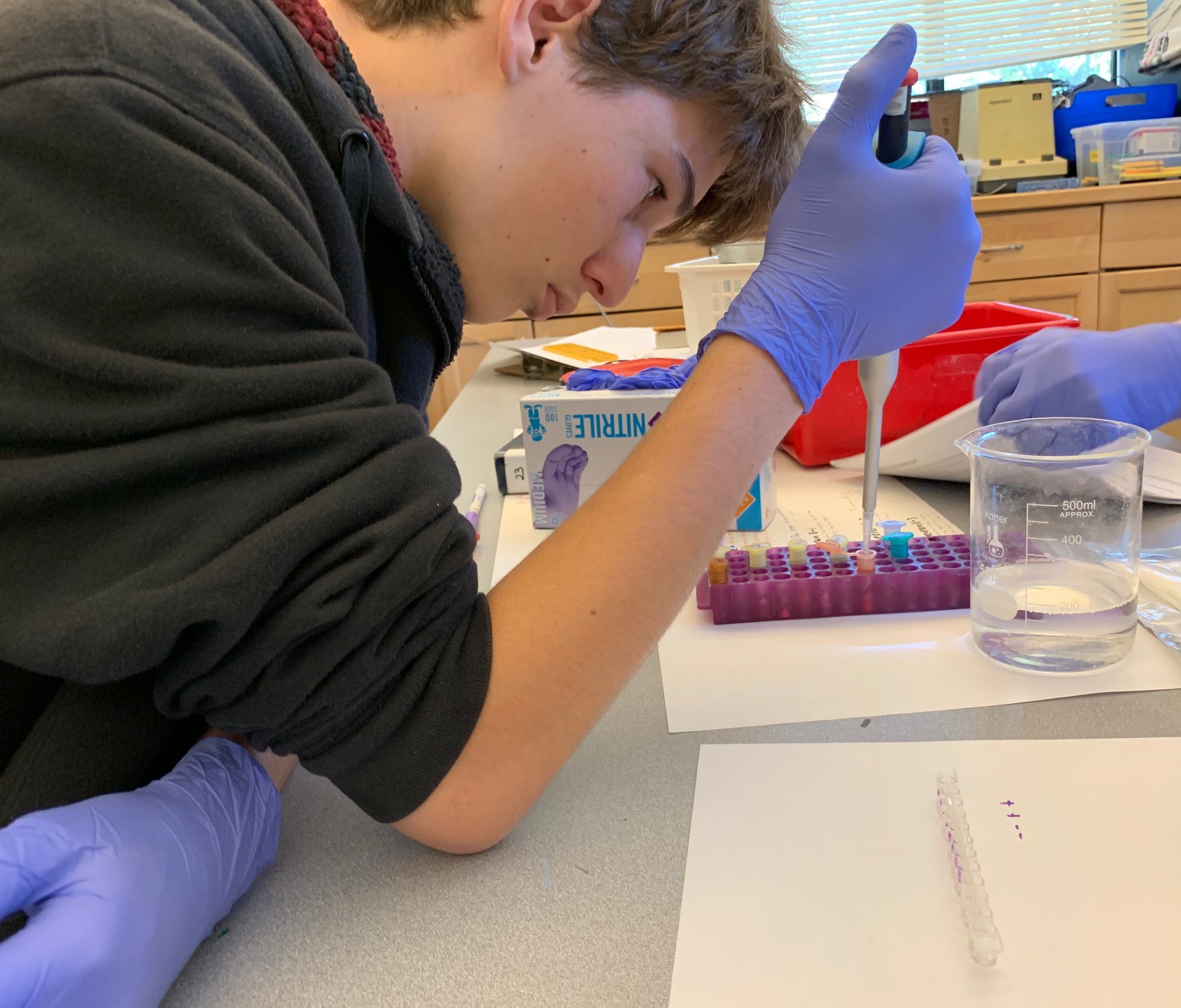 The Mount Madonna School (MMS) ninth grade class has completed a comprehensive study of the giant panda as a capstone on an intensive year of classroom biology. The study culminated with the students designing and completing an ELISA, or enzyme-linked immunosorbent assay, to test captive pandas for breeding readiness biochemically.
The Mount Madonna School (MMS) ninth grade class has completed a comprehensive study of the giant panda as a capstone on an intensive year of classroom biology. The study culminated with the students designing and completing an ELISA, or enzyme-linked immunosorbent assay, to test captive pandas for breeding readiness biochemically.
In preparation, the students did a semester of studies in evolution, ecosystems, anatomy, and zoology, then studied cell biology and practiced advanced lab techniques such as electrophoresis and DNA fingerprinting.
The level of difficulty and curriculum in high school life sciences has increased all over the world due to significant discoveries in genetics. This has also elevated middle school science curriculum. By taking biology as ninth graders, students are better prepared for their freshmen marine biology and sophomore oceanography learning journeys to Catalina Island.
“So much of what we understand about organisms and ecosystems today is coming to us from biochemistry in the lab,” said teacher Lisa Catterall. “It’s something students need to be familiar with as citizens going into the future. Looking at something immediate and charismatic, whether it’s a giant panda or a leopard shark on Catalina, and being able to visualize everything that effects that animal from the long-term processes of the ecosystem it live in, to the processes within that are so small you can’t even see them with a microscope, will give students the complex perspective they will need in the future to solve the problems humans create in the global biosphere.”
 ELISAs are a completely new technique in the science lab at MMS, as is the ability to have a group in ninth grade design and understand a bioassay in the context of an environmental problem.
ELISAs are a completely new technique in the science lab at MMS, as is the ability to have a group in ninth grade design and understand a bioassay in the context of an environmental problem.
“The ELISA was a simple process when you understand it,” observed freshman Jimmy Bregman. “I think it was cool how we went through every step and got to picture every little piece.”
“I liked how we learned many little details about the pandas and exactly how their cycles worked,” said classmate Addy Catterall-Pendleton.
The students researched all aspects of the challenges facing reintroduction of pandas, and specifically studied hormonal cycles in order to decide which molecule to target with their ELISA.
Both the hands-on biochemistry labs and the trip to Catalina were incorporated into the curriculum to give students an idea of what it is like to be a practicing scientist.
“If all we ever do in science is drill the cannon into students’ heads, they will never find out if they would enjoy really actively working as a scientist in the future,” commented Catterall. “Learning about something from a book or lecture does not always give a kid a window into what it’s like to be in that career.”
“I loved using the pipettes and just doing the actual lab. It was fun,” said freshman Alyssa Manzur.
“It was interesting to do a real lab like that, and I enjoyed finding out about the pandas because they are a threatened species that needs saving,” added classmate Grace Timan.
Teacher Nicole Silva acknowledged that teaching biology in ninth grade solidifies the foundation the students have before experiencing the biology intensives on Catalina.
“The students have a solid sense of the big picture,” commented Silva. “Instead of just getting marine biology as one piece of the picture, they have an idea of how it is all interconnected.” Biology was co-taught by Silva and Catterall this year.
The ninth and tenth grades depart on Monday for Catalina Island and Howlands’ Landing (freshmen) and the USC Wrigley Institute for Environmental Studies and Marine Science Center (sophomores).
####
Contact: Leigh Ann Clifton, director of marketing & communications,
Nestled among the redwoods on 355 acres, Mount Madonna School (MMS) is a community of learners dedicated to creative, intellectual, and ethical growth. MMS supports its students in becoming caring, self-aware, discerning and articulate individuals; and believe a fulfilling life includes personal accomplishments, meaningful relationships and service to society. The CAIS and WASC accredited program emphasizes academic excellence, creative self-expression and positive character development. Located on Summit Road between Gilroy and Watsonville. Founded in 1979.




